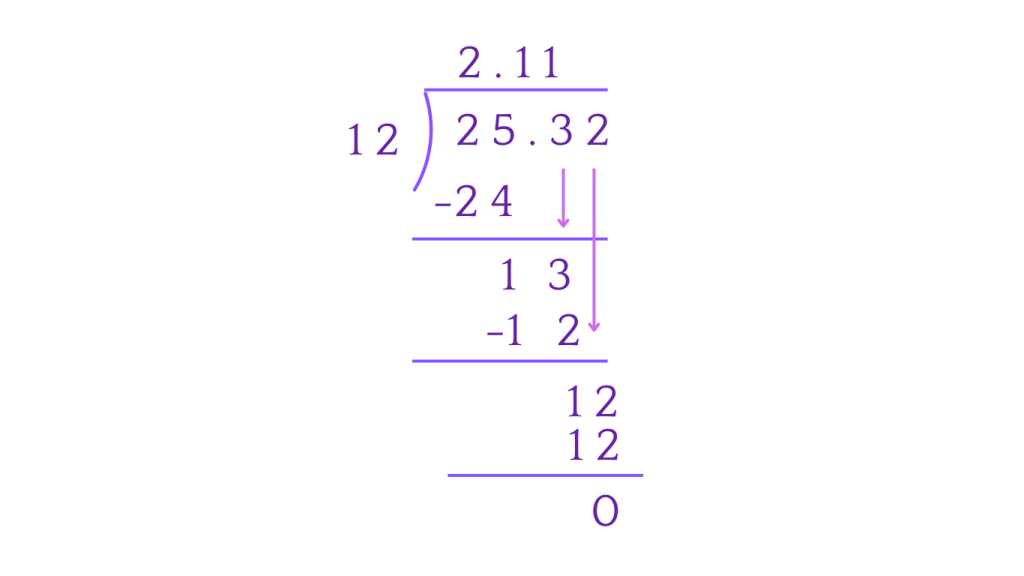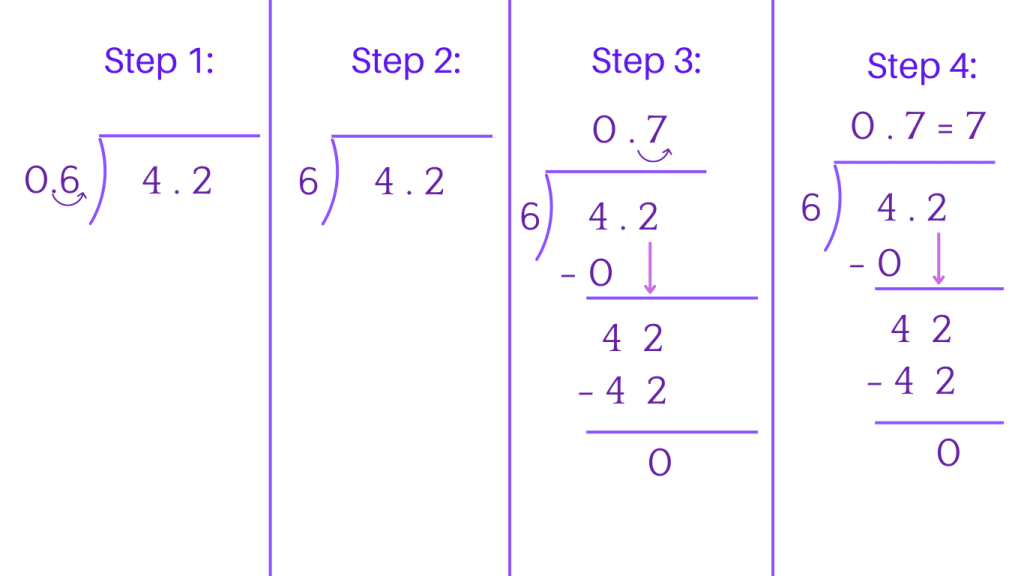Dividing Decimals – Step-by-Step Guide
Table of Contents
Introduction
Decimals
Decimals are an essential part of mathematics, representing numbers that fall between whole numbers. They are used to express values that are not whole, such as measurements, money, and percentages. Dividing decimals is a fundamental skill that allows us to perform precise calculations in various real-life and mathematical scenarios. In this article, we will explore the concept of dividing decimals and learn how to divide decimals by whole numbers and other decimal numbers.
Analogy of Definition
Dividing Decimals
Dividing decimals involves the process of dividing a decimal number by another decimal number or a whole number. It requires careful attention to decimal placement and the use of specific techniques to ensure accurate results.
Method
Dividing Decimals by Whole Numbers
When dividing a decimal by a whole number, the process involves dividing as usual and then placing the decimal point in the quotient directly above the decimal point in the dividend. If the dividend does not have a decimal point, a decimal point is placed at the end of the dividend before performing the division.
Dividing Decimals by Decimal Numbers
When dividing a decimal by another decimal number, the key is to convert the divisor (the number being divided into the dividend) into a whole number by shifting the decimal point to the right. This conversion allows us to perform the division as if we were dividing by a whole number. Once the division is complete, the decimal point is placed in the quotient based on the number of decimal places in the dividend and the divisor.
Examples
Example 1: Dividing 25.32 by 12
Step 1: First, the whole number portion is divided. So dividing 25 by 12 gives us 1 as remainder.
Step 2: Now, to begin dividing the decimal part, we pllace the decimal point in the quotient directly above the decimal point in the dividend and continue the division normally.
Answer:25.32 by 12 = 2.11

Example 2: Dividing 4.2 by 0.6
Step 1: Convert the divisor to a whole number by shifting the decimal point to the right
0.6 becomes 6
Step 2: Perform the division as if dividing by a whole number
4.2 ÷ 6 = 0.7
Step 3: Place the decimal point in the quotient based on the number of decimal places in the dividend and the divisor
Answer: 4.2 ÷ 0.6 = 7

Quiz
Tips and Tricks
1. Move the Decimal
Tip: When dividing decimals, move the decimal point in both the dividend (the number being divided) and the divisor (the number doing the dividing) to make the divisor a whole number. Then, move the decimal in the quotient (the answer) the same number of places to the right as you did in the dividend.
2. Estimate
Tip: Before performing the actual division, estimate the quotient by rounding both the dividend and the divisor to the nearest whole number. This can help you quickly assess the approximate value of the quotient.
3. Zero Padding
Tip: If necessary, add zero(s) to the end of the dividend to ensure that it has the same number of decimal places as the divisor. This makes the division process easier and ensures that the decimal point is in the correct position in the quotient.
4. Use Mental Math
Tip: Simplify the division by using mental math techniques. For example, if you’re dividing by 10, 100, or 1000, simply move the decimal point to the left in the dividend to find the quotient.
5. Practice with Whole Numbers
Tip: Start by practicing division with whole numbers before moving on to decimals. Once you feel comfortable with the process, you can apply the same principles to dividing decimals.
Real life application
Story: “The Decimal Division Adventures of Maya and Ethan”
Maya and Ethan were two curious students who loved exploring the practical applications of mathematics. They encountered various real-life scenarios that required them to apply their knowledge of dividing decimals to solve everyday problems.
Challenge 1: The Baking Project
Maya and Ethan decided to bake a cake that required 2.5 cups of flour. They wanted to make half the recipe, so they needed to divide the amount of flour by 2. By using their understanding of dividing decimals, they calculated that they needed 1.25 cups of flour to make the smaller batch of cake.
Challenge 2: The Shopping Spree
During a shopping trip, Maya and Ethan had $45 to spend on 3 items. They needed to divide the total amount equally among the items to stay within their budget. By dividing $45 by 3, they determined that they could spend $15 on each item, allowing them to make informed purchasing decisions.
Challenge 3: The Road Trip Adventure
On a road trip, Maya and Ethan traveled 120.6 miles in 3 hours. They wanted to calculate their average speed in miles per hour, which required them to divide the distance traveled by the time taken. By dividing 120.6 by 3, they found that their average speed was 40.2 miles per hour.
FAQ's
Like? Share it with your friends

